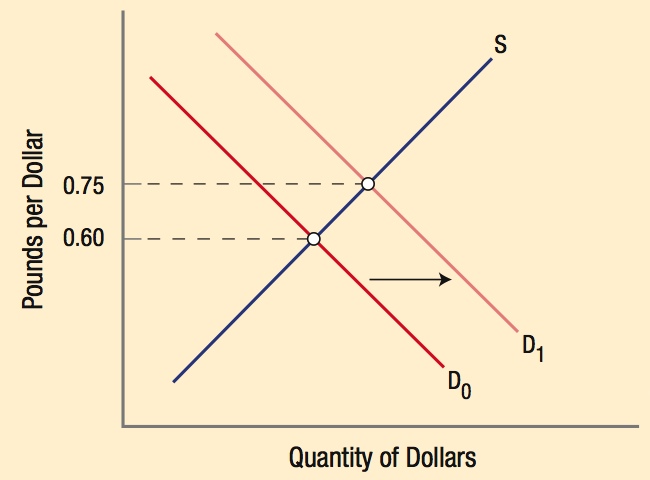Chapter Summary
Chapter Summary
Section 1: The Balance of Payments

The current account includes payments for imports and exports of goods and services, incomes flowing into and out of the country, and net transfers of money.
The capital account includes flows of money into and out of domestic and foreign assets.
The sum of the current account and capital account balances must equal zero.
Foreign investment in the United States includes foreign ownership of domestic plants or subsidiaries; investments in mutual funds, stocks, and bonds; and deposits in U.S. banks. Similarly, U.S. investors hold foreign financial assets in their portfolios and own interests in foreign facilities and companies.
Section 2: Exchange Rates
The exchange rate defines the rate at which one currency can be exchanged for another.
A nominal exchange rate is the price of one country’s currency for another.
The real exchange rate takes price levels into account. The real exchange rate (er) is the nominal exchange rate (en) multiplied by the ratio of the price levels of the two countries:
er = en × (Pd/Pf)
If exchange rates are fully flexible, markets determine the prevailing exchange rate. If there is an excess demand for dollars, the dollar will appreciate, or rise in value. If there is an excess supply of dollars, the value of dollars will decline, or depreciate.

The purchasing power parity of a currency is the rate of exchange at which some currency in one country can purchase the same goods in another country.

It is important to keep in mind which currency is being used to measure the price of others. Graphs can be viewed as showing either an appreciation or a depreciation, depending on which currency is being considered.

In the figure, an increase in demand for U.S. dollars leads to its appreciation from 0.60 pounds per dollar to 0.75 pounds per dollar.
Interest rates and exchange rate expectations affect the capital account. An interest rate rise in one country will cause capital to flow into it from the other country.
Real exchange rates affect the payments for imports and exports, and also affect the current account. Inflation causes depreciation of a country’s currency, worsening its current account.
Interest rates can differ between countries due to expected exchange rate changes (Δε) and a risk premium (x) when capital is not perfectly substitutable between countries.
rUS = rUK–Δε + x
Section 3: Monetary and Fiscal Policy in an Open Economy
A fixed exchange rate system is one in which governments determine their exchange rates, then use macroeconomic adjustments to maintain these rates.

A flexible or floating exchange rate system relies on currency markets to determine the exchange rates, given macroeconomic conditions.
Some countries choose to peg their currency to another in order to facilitate trade, attract foreign investment, or promote monetary stability.
Fixed exchange rate systems hinder monetary policy, but reinforce fiscal policy.
Flexible exchange rates hamper fiscal policy, but reinforce monetary policy.